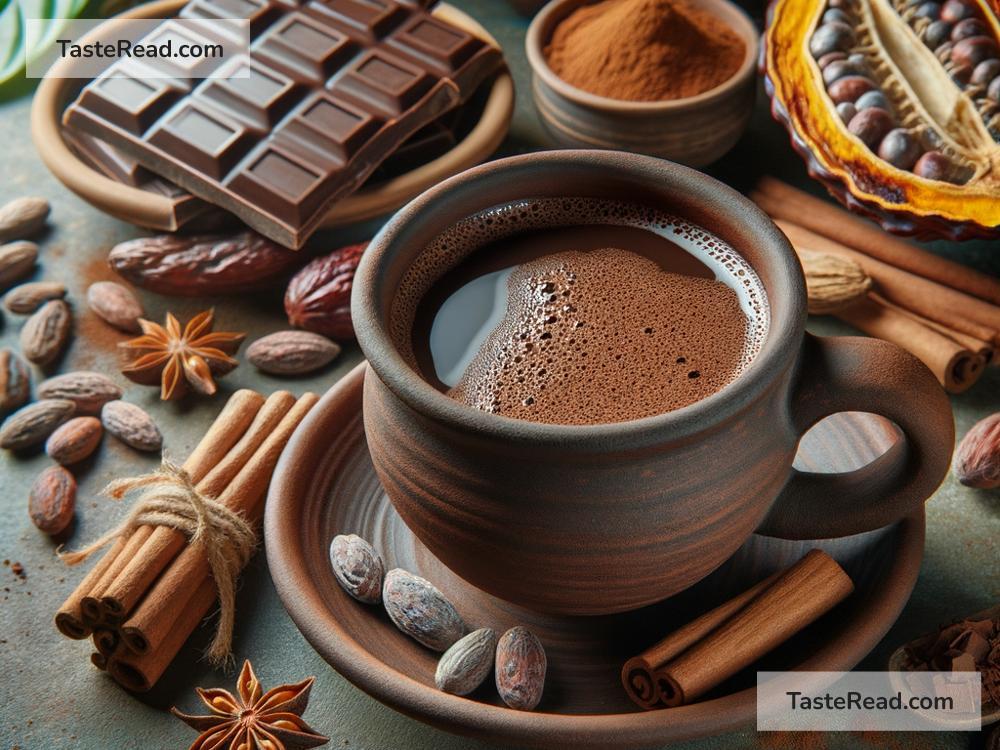Chocolate: From Mesoamerican Beverage to Global Delight
When we think of chocolate today, we often picture sweet treats like chocolate bars, cakes, and candies. It’s a favorite around the globe, enjoyed by people of all ages. But chocolate has a very fascinating history that goes back thousands of years. Its journey starts in ancient Mesoamerica and travels across continents to become the worldwide favorite it is today.
Ancient Beginnings in Mesoamerica
Chocolate comes from the seeds of the cacao tree, which grows in tropical regions. The cacao tree first grew in the rainforests of Mesoamerica, a region that includes modern-day Mexico and Central America. The early civilizations in this area—like the Olmecs, Mayans, and Aztecs—were the first people to discover the wonders of cacao.
For these ancient peoples, cacao wasn’t a snack or dessert as we know it today. Instead, it was used to make a bitter drink called “xocoatl.” This drink was made by grinding cacao beans into a paste and mixing it with water, chili peppers, and spices. There was no sugar in chocolate at that time, so it tasted very different from the chocolate we eat today.
Cacao was highly valued by these civilizations. It was even used as currency! Aztecs, for example, would trade cacao beans for goods and services. They believed cacao was a gift from their gods, especially the god Quetzalcoatl. Drinking chocolate was reserved for royalty, warriors, and religious ceremonies, making it a very special and sacred beverage.
Chocolate Meets Europe
The story of chocolate took a major turn in the early 1500s when Spanish explorers arrived in the Americas. One of these explorers, Hernán Cortés, is believed to have brought cacao back to Spain after encountering the Aztecs. At first, Europeans were not impressed with the bitter flavor of chocolate. But, they quickly learned to sweeten it by adding sugar and cinnamon, creating a drink that would win over the palates of the upper class.
During the 1600s and 1700s, chocolate became incredibly popular among European royals and aristocrats. It was often served as a hot drink at lavish parties and gatherings. Because cacao beans were rare and expensive, chocolate was seen as a luxury product that only the wealthy could afford.
As European colonial powers expanded, they began to grow cacao in their overseas colonies, particularly in regions like Africa and the Caribbean. This led to a greater supply of cacao, slowly making chocolate more accessible to people beyond the elite.
Chocolate Transformed: The Birth of the Chocolate Bar
For many years, chocolate remained solely a drink. But in the 19th century, new advancements changed chocolate forever. In 1828, a Dutch chemist named Coenraad Johannes van Houten invented the cocoa press. This machine separated the cacao butter (the fat) from the cacao solids, allowing chocolate makers to create powdered cocoa. This made chocolate easier to mix and improved its texture.
Soon after, entrepreneurs began experimenting with cacao butter. In 1847, the British company Fry & Sons created the first-ever solid chocolate bar by mixing cocoa powder, sugar, and cacao butter. This was a groundbreaking moment, as chocolate could now be eaten instead of just drunk.
The creation of milk chocolate added another layer of innovation. In 1875, Swiss chocolatier Daniel Peter combined chocolate with powdered milk and developed the first milk chocolate bar. Around the same time, Swiss businessman Henri Nestlé helped perfect milk chocolate production by creating smoother, creamier textures. These inventions made chocolate even more delicious and popular.
Chocolate Goes Global
As chocolate production became more efficient, its popularity exploded across the world. In the 20th century, major chocolate companies like Hershey’s, Cadbury, and Mars helped make chocolate widely available. Instead of being a luxury item, chocolate became an affordable treat for everyone.
Today, chocolate is enjoyed in countless forms: bars, truffles, hot cocoa, ice cream, cakes, cookies, and more. It’s a huge industry worth billions of dollars, with cacao farmers working hard to grow the beans that make this beloved product. Countries like Ivory Coast and Ghana are now leading producers of cacao.
Chocolate has also become part of cultural traditions and celebrations. Think of heart-shaped boxes of chocolate for Valentine’s Day, chocolate eggs for Easter, or rich hot cocoa on a cold winter evening. No matter the occasion, chocolate brings joy to people all over the world.
A Sweet Legacy
From the sacred beverage of Mesoamerica to the sweet treats of today, chocolate has an incredible history. It has transformed from a bitter ceremonial drink into a global delight that’s loved by millions. Whether you prefer dark chocolate, milk chocolate, or white chocolate, one thing is certain: its story is as rich as its flavor.
Next time you enjoy a piece of chocolate, take a moment to think about its fascinating journey. From the ancient cacao trees of Mesoamerica to your favorite chocolate treats today, it’s a story of innovation, culture, and timeless enjoyment. Chocolate truly is more than just a sweet—it’s part of history!


